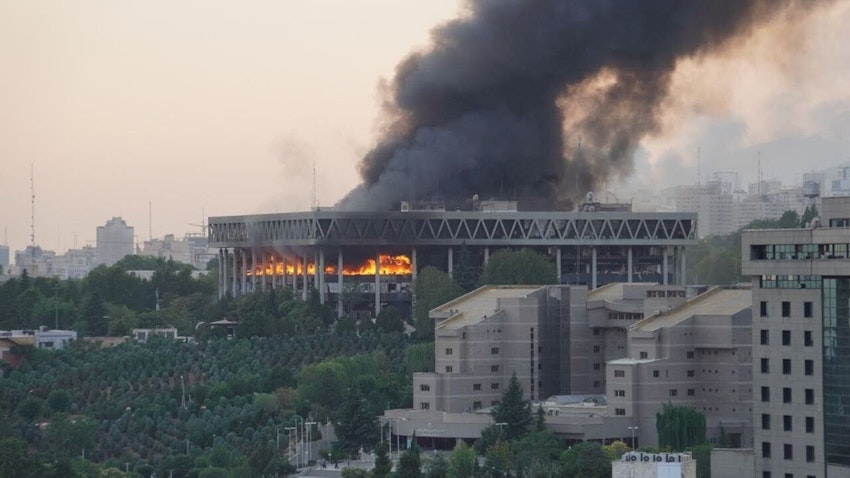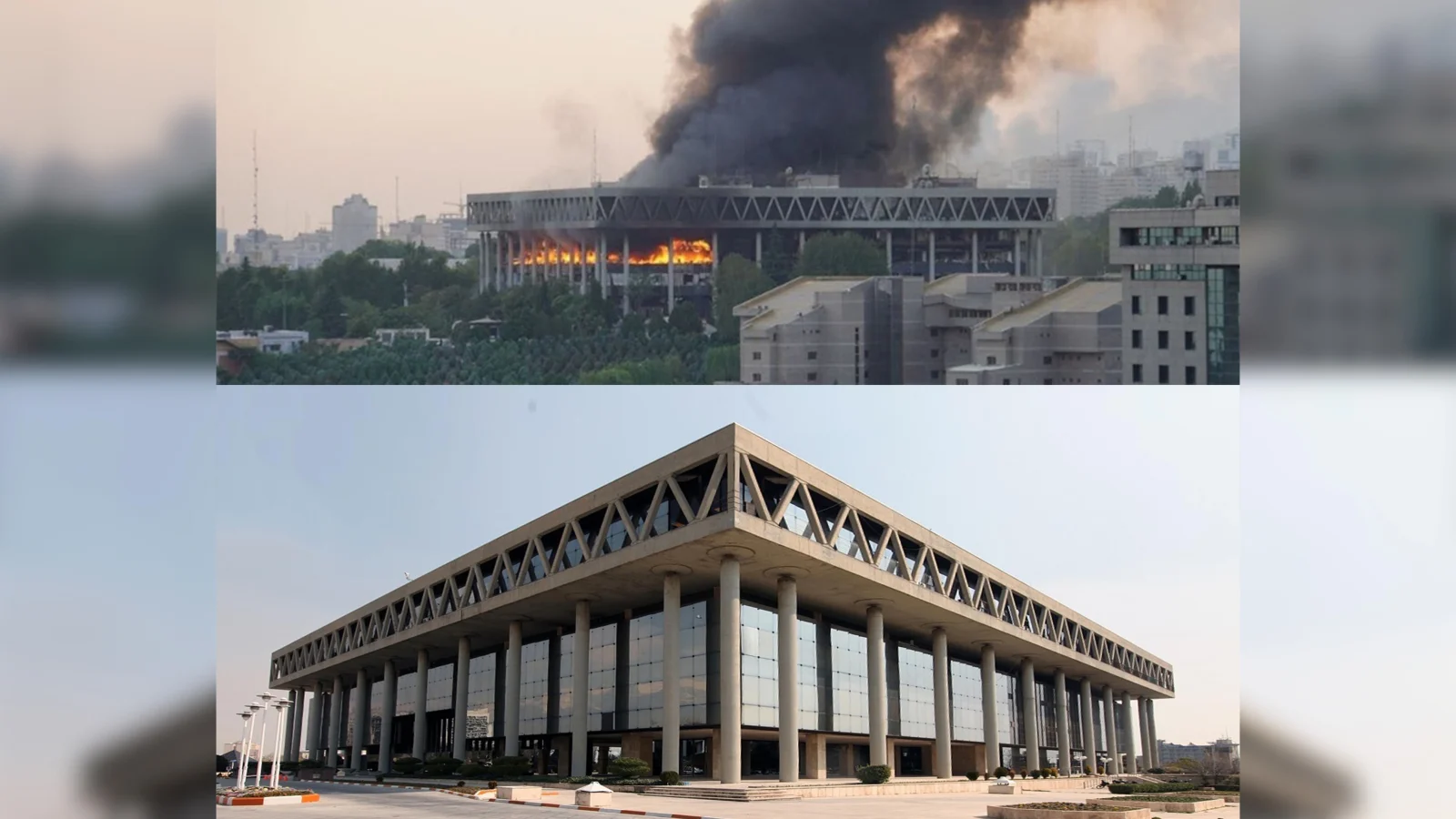One of Tehran’s most prominent architectural landmarks, the Islamic Republic of Iran Broadcasting (IRIB) headquarters, was severely damaged on June 16 following an Israeli airstrike, leaving behind broken glass, exposed concrete, and a powerful reminder of the vulnerability of architecture in times of conflict.
Completed in the early 1990s and widely attributed to Farmanfarmaian & Associates, the IRIB headquarters has long stood as a symbol of institutional power and post-revolution Iranian modernism. Located on Valiasr Street, the country’s longest urban axis, the building is known for its dramatic V-shaped plan, monumental concrete structure, and layered spatial depth. Its exposed steel trusses and bold structural grid expressed a distinct architectural language, one that projected authority and permanence.

The building’s design was not only functional but deeply symbolic. It framed the identity of a state media institution through form, material, and scale. The void between the two angled wings created a commanding presence, while the repetitive vertical and diagonal elements across the façade reflected a fusion of brutalist undertones with high-tech aspirations. Over the decades, it became a part of Tehran’s architectural memory, a civic monolith as much as a media center.
IRIB Headquarters Struck Mid-Broadcast
On June 16, however, this monument was violently disrupted. During a live television broadcast, missiles struck the building, forcing staff to flee mid-air, with the ceiling collapsing and smoke quickly engulfing the studio. According to a report from CNN, two employees lost their lives, and several others were injured. Video footage of an anchor evacuating the newsroom while still reporting went viral, capturing the surreal moment when architecture, media, and war intersected.

In a statement, Israeli officials described the strike as targeting what they called a center of “military propaganda.” Iranian authorities have condemned the attack, calling it a direct assault on the nation’s cultural and civic infrastructure. While political tensions dominate headlines, the architectural loss is equally profound.
The IRIB building, like many civic structures built in post-revolution Iran, carried layers of meaning, political, historical, and architectural. Its damage is not just structural; it marks the erasure of a piece of Tehran’s urban identity. In the face of escalating conflict, the destruction of buildings such as the IRIB headquarters underscores the fragility of architectural heritage and the urgent need to protect it, not only as material but as memory.
As of June 17, broadcasting operations have been rerouted to secondary facilities. The building remains cordoned off, its future uncertain.



















Leave a comment